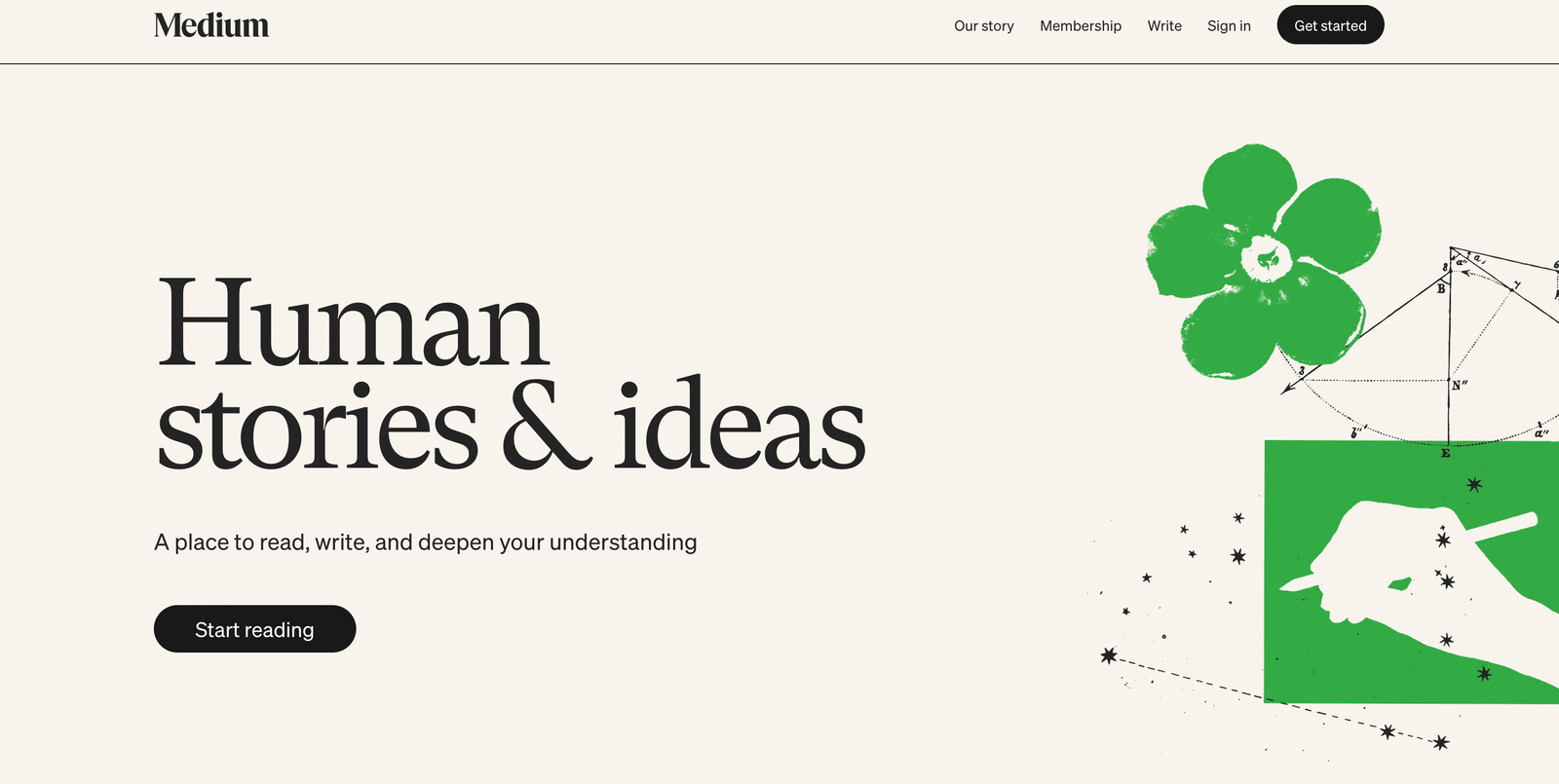Finding an article on Medium that defames you or spreads false information about your business creates immediate reputation damage. Medium articles frequently rank highly in Google search results and remain permanently accessible, meaning harmful content published there appears prominently when people search your name.
Understanding Medium’s removal policies requires recognizing that the platform positions itself as a publishing platform focused on ideas and expression rather than a social network, which shapes everything about how they handle content disputes.
Medium operates under Section 230 immunity, which protects them from liability for user-generated content. This means Medium isn’t responsible for defamatory articles published by users and has no obligation to remove content simply because it’s false or damaging.
The platform acts when content violates specific rules around harassment, privacy violations, or copyright infringement, but they won’t arbitrate factual disputes between writers and subjects.
Let us help you delete your post, Contact us at Info@respectnetwork.com, pay after result only.
What Medium Will Remove
Medium prohibits threats of violence and incitement, meaning content that threatens, encourages, or incites violence against individuals gets removed when reported. Hateful content promoting violence or hatred against people based on protected characteristics like race, ethnicity, religion, disability, age, sexual orientation, or gender identity violates rules. Content glorifying violence or suffering also qualifies for removal.
Harassment represents Medium’s most frequently invoked removal policy. The platform doesn’t tolerate bullying, threatening, mocking, or shaming someone in ways likely to encourage others to pile on, or engaging in repetitive targeted campaigns against individuals. Using derogatory language, slurs, or obscenities to attack people crosses from criticism into harassment. Misusing Medium features like responses or mentions to harass someone provides grounds for removal.
Privacy violations get serious attention from Medium’s trust team. Posting private communications between individuals without explicit consent from all parties gets removed, including private messages, emails, and text conversations. Publishing someone’s truly private information without consent qualifies for removal—non-public phone numbers, physical addresses, financial information, government ID numbers. Doxxing, which includes aggregating publicly available information to target, shame, or endanger people, violates policy even if individual data points are technically public. Posting intimate or explicit images without the subject’s consent gets removed immediately.
Copyright infringement gets removed through Medium’s DMCA process. If someone publishes your copyrighted text, images, or creative work without authorization, Medium removes it upon receiving a proper DMCA notice. The process typically results in removal within 72 hours for clear infringement.
What Medium Won’t Remove
Medium does not remove content simply because it contains false information or defames someone. The platform’s position is that determining truth versus lies belongs in courts rather than content moderation. An article containing demonstrably false statements that damage your reputation typically doesn’t violate Medium’s rules unless it crosses into harassment or privacy violations.
Negative reviews, criticism, and unflattering opinions about individuals or businesses remain published even when unfair or misleading. Medium protects expression of opinions as core to their mission. Someone writing that your business provides terrible service doesn’t violate rules, even if you can prove otherwise. The platform distinguishes between opinion and fact, with opinions receiving broad protection.
Articles critical of public figures receive special protection under Medium’s philosophy about public discourse. Public figures face less protection under harassment policies because discourse about newsworthy individuals serves the public interest. Politicians, executives, and celebrities encounter higher bars for getting critical content removed even when it causes significant reputational harm.
The Copyright Removal Process
Copyright infringement represents your fastest removal path when applicable. If someone publishes your copyrighted work on Medium without authorization, file a DMCA takedown notice to copyright@medium.com or through their web form. You need your physical or electronic signature (typing your name suffices), identification of your copyrighted work with links to originals, specific URLs of infringing material on Medium, your contact information, a good faith statement that use is unauthorized, and an accuracy statement under penalty of perjury.
Medium processes notices in order received. When they receive your notice, they contact the poster and provide a copy with instructions for filing a counter-notice. If the poster claims fair use, they can submit a counter-notification. You then have 10-14 business days to file a lawsuit or Medium restores content. Most don’t file counter-notices because it exposes them to legal liability.
False DMCA notices carry serious consequences under federal law, potentially making you liable for damages and attorneys’ fees if you knowingly misrepresent infringement. Only file when you genuinely own copyright to the content. Medium terminates accounts of users subject to repeated DMCA notifications, providing powerful deterrence against serial infringers.
Let us help you delete your post, Contact us at Info@respectnetwork.com, pay after result only.
Reporting Policy Violations
When content violates Medium’s rules beyond copyright, report through their in-product system or email trust@medium.com with detailed information. Click the three dots menu on any post, select report, and choose the specific policy violation. Provide as much context as possible about why content violates the specific rule.
For complex situations, email trust@medium.com with exact URLs of violating content, specific explanation of which rules are violated and how, relevant background information, and screenshots or evidence supporting your claim. Focus on how content violates Medium’s specific policies rather than arguing it’s false or unfair.
Response times vary significantly. Simple violations might be addressed within days. More nuanced situations requiring investigation can take weeks. Medium provides no guaranteed response time. If Medium denies your initial report, you can appeal with additional context or evidence, but repeated reporting of the same content for the same reasons may be treated as abuse.
When Reporting Fails—Legal Options
When Medium refuses removal because content doesn’t violate policies, your options involve legal action. Send a cease and desist letter to the article’s author demanding removal. Many authors voluntarily remove content when faced with potential litigation. The letter should identify specific false statements, explain how you can prove they’re false, outline harm caused, and demand removal within a specific timeframe with consequences stated.
If the author refuses, file a defamation lawsuit in appropriate jurisdiction. You’ll need to identify the author if they’re pseudonymous, which may require a John Doe lawsuit with subpoenas to Medium requesting account information. Once identified, proceed with standard defamation litigation proving the article contains false statements of fact, statements were published to third parties, statements harmed your reputation, and the author acted with at least negligence.
Winning a defamation judgment gives you a court order compelling removal. Submit it to Medium’s legal department at their San Francisco address. Medium typically complies with valid court orders. Submit the same order to Google requesting de-indexing of Medium URLs from search results even if content remains on Medium’s servers.
Defamation litigation costs $50,000-$150,000+ depending on complexity and takes 12-24 months minimum from filing to judgment. These costs only make sense when reputational damage is severe and quantifiable, you can clearly prove false statements of fact rather than opinions, and you can identify a defendant with assets to collect against.
Suppression When Removal Fails
When you cannot remove content from Medium, minimize its impact through reputation management. Push harmful articles lower in search results by creating and promoting positive content that ranks higher. Develop comprehensive online presence across authoritative platforms including a professional website optimized for your name, verified social media profiles, profiles on industry-specific sites, and positive press coverage.
Monitor mentions of your name online to detect new problems quickly using Google Alerts and social media monitoring tools. Early detection allows faster response before content gains traction and links that increase search visibility. Focus on generating legitimate positive reviews and testimonials on platforms that matter to your industry. Build authentic relationships with industry press who might cover positive achievements. Volume of positive content from diverse sources helps dilute impact of individual negative articles.
Let us help you delete your post, Contact us at Info@respectnetwork.com, pay after result only.
The Bottom Line
Success with Medium content removal depends on whether your situation fits their specific policy categories. Copyright infringement, privacy violations, clear harassment campaigns, and hate speech get removed when properly reported. Defamation, false statements, negative criticism, and content you dislike typically won’t be removed unless you obtain court orders through expensive litigation.
Your strategy should match your situation. If someone publishes your copyrighted work without permission, file a DMCA notice immediately. If content clearly harasses you through sustained personal attacks, threats, or privacy violations, report through trust@medium.com with comprehensive evidence. If content is defamatory but doesn’t violate Medium’s policies, either pursue expensive litigation for court-ordered removal or focus on reputation management to suppress its visibility.
Medium operates as a publishing platform that strongly protects expression. They’ll enforce clear rules against harassment, privacy violations, and copyright infringement, but won’t remove content simply because someone claims it’s false or unfair. Adjust your expectations accordingly.
How Respect Network Can Help
At Respect Network, we’ve successfully removed harmful content from Medium and managed reputation damage when removal proved impossible. We understand Medium’s policies and enforcement patterns, know how to frame reports for maximum success, and have extensive experience pursuing legal remedies when platform reporting fails.
Our Medium removal services include comprehensive case evaluation determining whether content violates Medium policies or requires legal action, professional DMCA notice preparation for copyright infringement, strategic reporting of harassment and privacy violations with compelling evidence, attorney coordination for cease and desist letters and defamation litigation, court order procurement and submission when you have strong legal grounds, Google de-indexing through legal channels, and comprehensive reputation management campaigns that suppress harmful articles through strategic SEO.
We provide honest assessments of removal likelihood based on Medium’s actual policies. We won’t promise removal when litigation represents your only realistic option, and we won’t waste money on strategies unlikely to succeed. Contact Respect Network today for a confidential consultation about your specific situation and let us develop the most effective strategy for your case.
Let us help you delete your post, Contact us at Info@respectnetwork.com, pay after result only.

